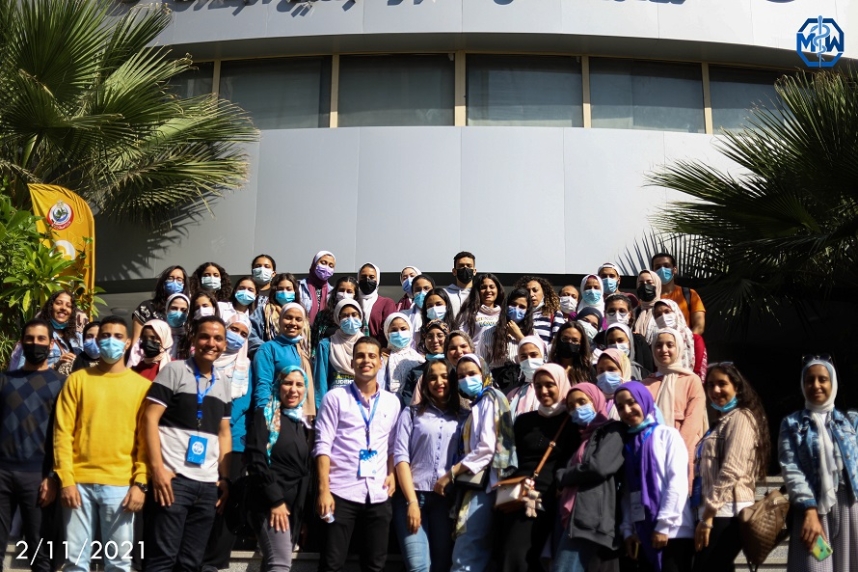The students visited the plasma collection center and learned about blood plasma, its components, functions and benefits of donation. Plasma for the donor, such as activating the bone marrow and strengthening the immune system, for patients in terms of providing safe treatment and avoiding pathological complications, and for the community to achieve self-sufficiency in plasma derivatives.
Furthermore, the students were acquainted with the most important plasma derivatives, their usage, the danger of not reaching the patient, the safety of the donation process and the conditions that must be met for donation.
Moreover, the students were also briefed about the devices used in the separation process and the way they operate, passing through the collection method.
In addition to a visit to the central laboratory to examine the plasma in the serology lab and the DNA testing lab, which are used to verify the validity of the collected plasma bags. In these labs, the students were introduced to the modern equipment used in this technology, the international quality standards programs related to these devices, and the follow-up programs for donors and the collected supplies until reaching the patient.
Later, the students visited the blood bank to learn about the importance of donating blood, its steps and the appropriate time to donate. Additionally, they asked a lot of important questions about these topics to the specialists and inquired about a lot of basic information.
This field trip took place within the framework of the President of the Republic’s initiative to manufacture and self-sufficiency of plasma derivatives, which was launched last July under the title “The Treatment Inside You”.
The field trip contributed to inviting the students to actively participate in the national project to donate plasma as permanent plasma donors periodically every two weeks, according to the guidelines of the World Health Organization where Plasma donation is the highest expression of community and humanitarian participation to save the lives of patients.

